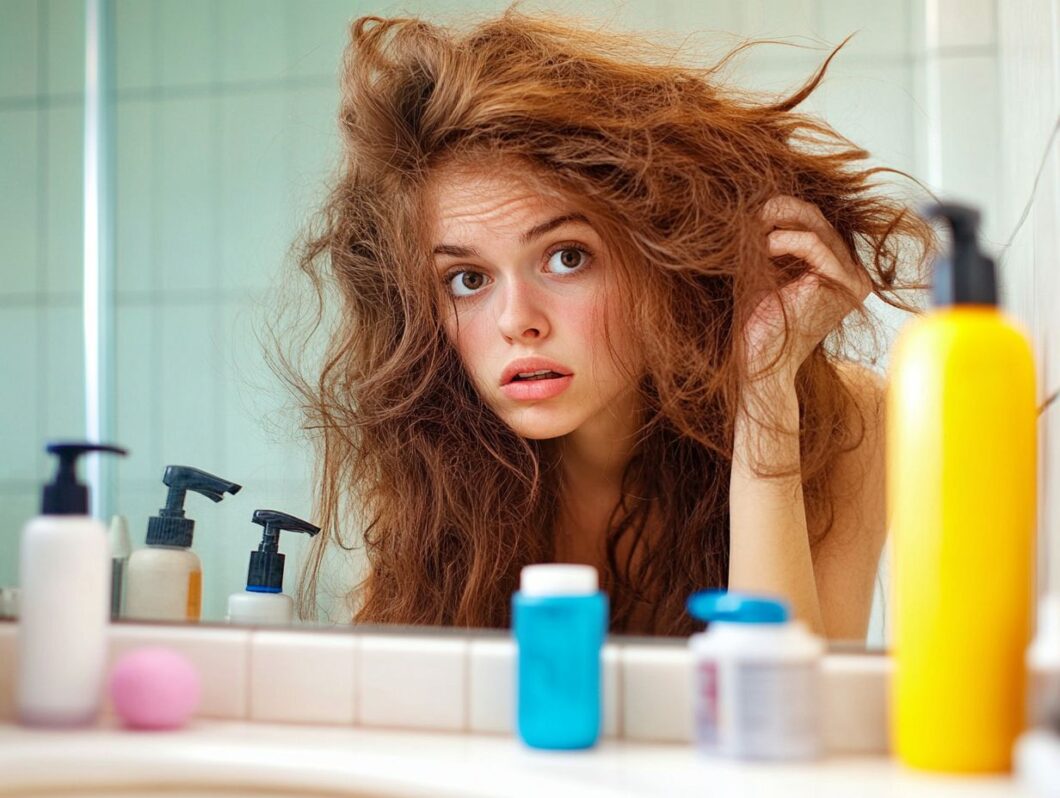Taking care of my hair extends beyond simply selecting the right shampoo or styling product; it involves understanding the common pitfalls that can lead to damage and unhealthy locks.
From using the wrong products with harmful ingredients to finding the right balance in washing frequency, every decision I make is significant. This article delves into the most prevalent haircare mistakes, examining the effects of heat styling, the necessity of protecting my hair from environmental factors, and the crucial role nutrition plays in maintaining hair health.
By identifying and steering clear of these missteps, I can pave the way for healthier, more vibrant hair. I invite you to explore how to nurture your mane and make informed choices for stunning results.
Key Takeaways:
Why Avoiding Mistakes is Important
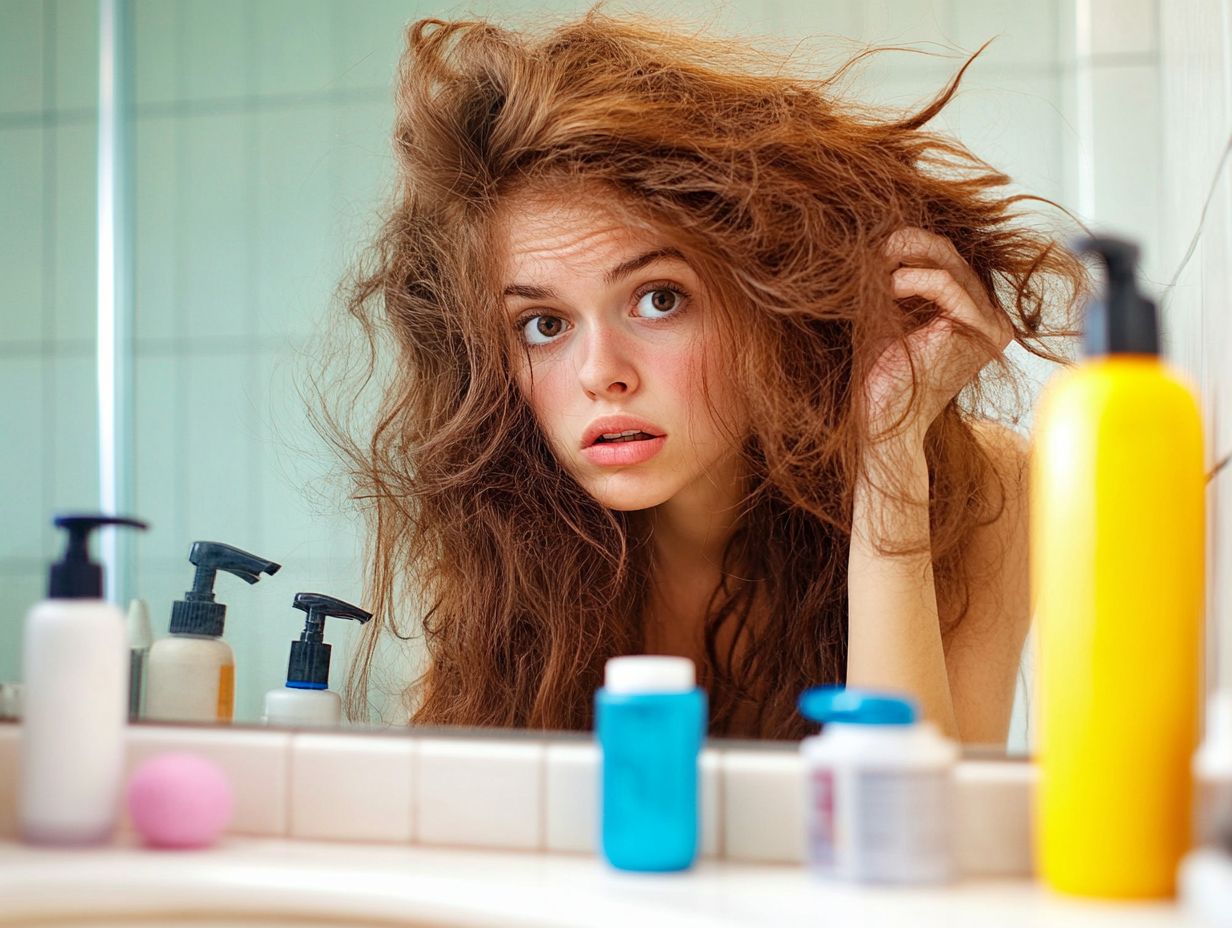
Avoiding common hair mistakes is essential for maintaining optimal hair health and achieving my desired look. Many individuals, including myself at times, tend to overlook key aspects of hair care, which can lead to split ends, dry hair, and other issues that significantly diminish both the appearance and quality of our hair.
As I’ve learned from beauty editors and hairstylists, understanding how to properly care for different hair types is crucial for preserving the vitality of my locks. This knowledge encompasses selecting the right products and implementing effective techniques to prevent damage and promote overall scalp health.
Using the Wrong Products
I understand that using the wrong hair products can lead to a variety of issues, including damaged hair and poor scalp health, so it’s crucial to choose wisely.
Products containing harmful ingredients can worsen problems such as split ends and dryness, adversely affecting my hair’s overall appearance and manageability.
Therefore, I prioritize researching and selecting professional brands like L’Oréal Professionnel, R+Co, and Christophe Robin, as they are specifically formulated to address diverse hair types and conditions.
Identifying Harmful Ingredients
Identifying harmful ingredients in hair care products is crucial for maintaining the health of both my hair and scalp, as certain chemicals can cause substantial damage. Ingredients such as sulfates, parabens, and silicones are common offenders that can lead to dryness and irritation, putting my hair’s health at risk.
I make it a point to carefully scrutinize product labels and choose options with natural, nourishing ingredients that support overall hair and scalp health.
To effectively read labels, I find it essential to familiarize myself with these harmful components, as they often lurk among lengthy ingredient lists. When evaluating a product, I prioritize sulfate-free options, which tend to be gentler on both hair and scalp, thereby minimizing the risk of dryness and breakage.
I also seek out beneficial ingredients like aloe vera and jojoba oil, which promote moisture retention and create a healthy scalp environment, positioning them as excellent alternatives to harsh chemicals.
By incorporating natural oils and extracts into my routine, I not only enhance shine and vitality but also bolster my hair’s resilience, helping me maintain the lush, vibrant locks I desire.
Overwashing and Underwashing
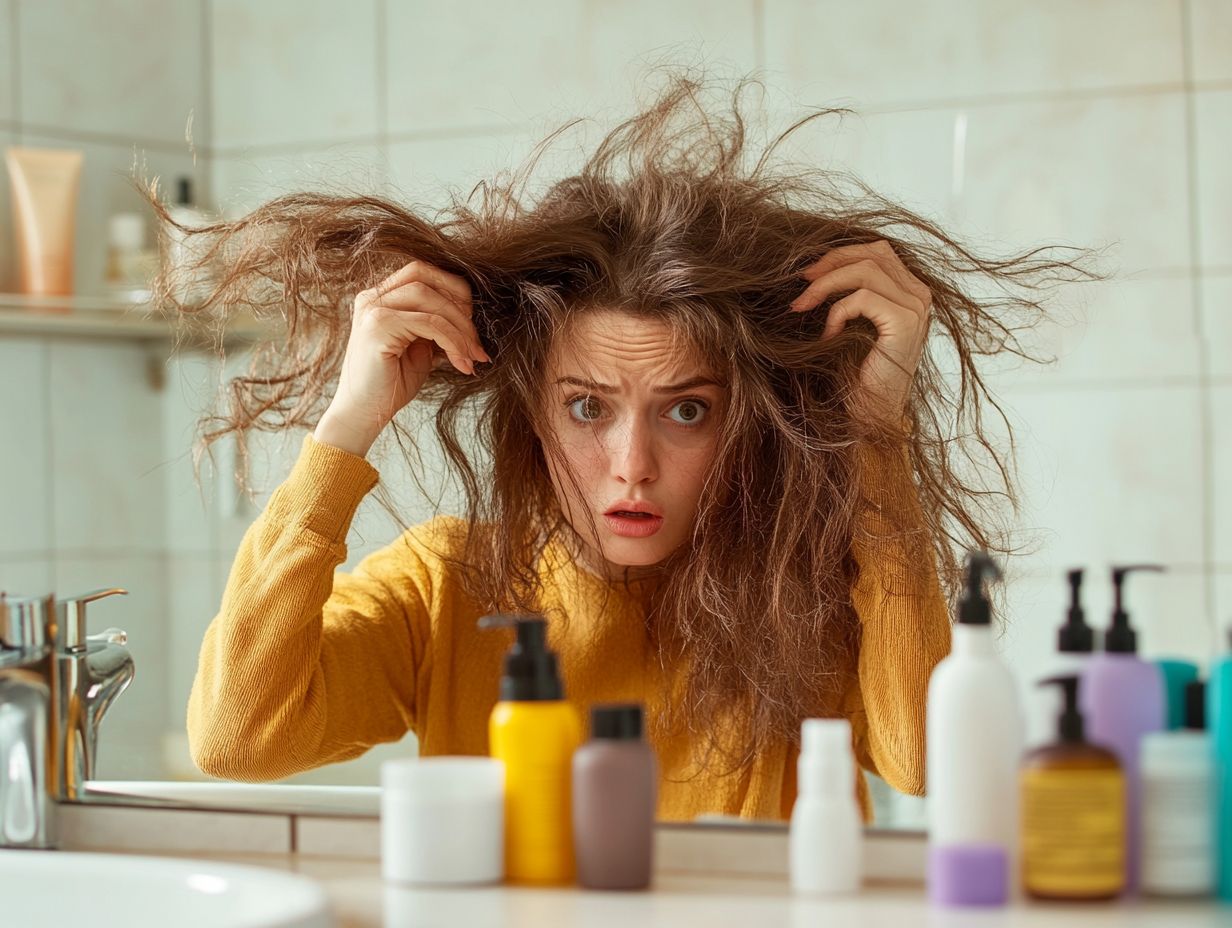
Finding the right balance between overwashing and underwashing is essential for maintaining the health of my hair and scalp, as both extremes can lead to undesirable outcomes.
Overwashing can strip my hair of its natural oils, resulting in dryness and scalp irritation, while underwashing may cause buildup and compromise hair health.
It is crucial for me to understand my specific hair type and adjust my washing routine accordingly. I also incorporate techniques such as gentle brushing to effectively distribute oils throughout my hair.
Effects on Scalp and Hair Health
The effects of washing frequency on both scalp and hair health are significant, impacting everything from moisture retention to overall appearance. I have observed that overwashing often leads to dry hair, compromised scalp health, and increased vulnerability to damage. Conversely, underwashing can result in excess oil and buildup.
To promote optimal hair and scalp health, it is essential for me to find a balanced washing routine tailored to my specific hair type and condition.
Achieving the right balance allows the natural oils to nourish the hair while keeping the scalp free from irritation and excess sebum. For those with dry hair, I recommend using a hydrating shampoo in combination with restorative conditioners to effectively support moisture balance and prevent the brittleness associated with frequent washing.
On the other hand, individuals with a greasy scalp should consider lightweight, clarifying shampoos that gently eliminate buildup without stripping essential moisture. Additionally, incorporating a deep conditioning treatment or a leave-in moisturizer every few washes can further enhance hydration, maintaining the vitality of both the scalp and hair while promoting a desirable shine.
Improper Hair Styling Techniques
I understand that improper hair styling techniques can result in significant damage, such as split ends and weakened hair strands, which makes it crucial to adopt best practices.
Many individuals overlook the necessity of using heat protectants before styling with high temperatures or fail to take their specific hair types into account when selecting tools and products.
As a professional in the field, I emphasize the importance of utilizing appropriate techniques and protective products to ensure the health and integrity of the hair.
Damage from Heat and Chemicals
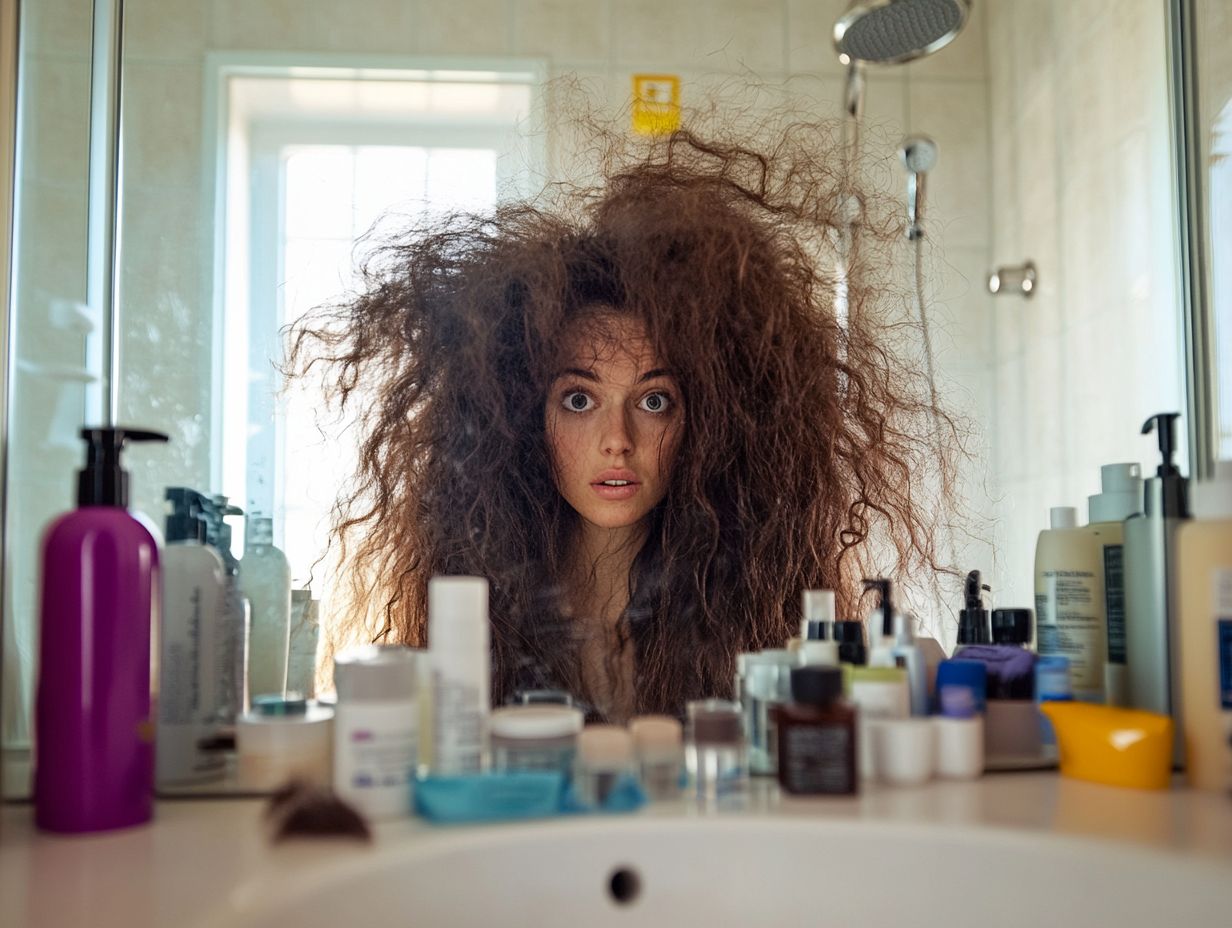
Damage from heat and chemicals is a significant concern in hair care for me, as excessive heat styling and harsh chemical treatments can lead to split ends and dry hair. I find that using heat protectants is essential to mitigate the harmful effects of high temperatures.
Additionally, understanding my hair type helps guide me in selecting the appropriate products and techniques to minimize damage.
Beyond protection, it’s important for me to recognize the various types of heat and chemical damage that can occur. For instance, I’ve noticed that fine hair often shows signs of damage more quickly than thicker strands, which means I need to use gentler heat settings and lighter styling products.
With curly or processed hair, I realize that it typically requires more moisture and specific treatments to counteract the effects of chemical processing. To prevent damage, I consider using leave-in conditioners or deep conditioning masks that are tailored to my hair’s unique needs.
I also make it a point to schedule regular trims to minimize the visibility of split ends, and I opt for professional-grade products that suit my hair type to promote healthier, more resilient locks.
Not Protecting Hair from the Elements
I recognize that failing to protect my hair from environmental elements such as the sun, wind, and pollution can lead to accelerated damage and negatively impact hair health.
Prolonged exposure to UV rays can result in color fading, while wind and pollution contribute to dryness and breakage.
To effectively safeguard against these elements, I find it essential to implement protective strategies, such as using silk pillowcases and selecting appropriate hair care products, in order to maintain vibrant and healthy hair.
Impact of Sun, Wind, and Pollution
The impact of sun, wind, and pollution on hair can be significantly detrimental, leading to moisture loss and increased fragility. I recognize that UV rays can degrade hair proteins, while windy conditions can result in tangles and split ends, and pollution can weigh hair down or contribute to buildup.
When exposed to these environmental stressors, the consequences can be evident not only as lifeless and brittle hair but also as long-term damage, including breakage and diminished shine. Over time, I may notice increased frizz and dullness, which underscores the importance of implementing effective strategies to mitigate these factors.
To protect my hair, I incorporate a high-quality leave-in conditioner with UV protection, providing a vital barrier against the sun’s harsh rays. Additionally, I commit to regular deep conditioning treatments to restore lost moisture. Using a clarifying shampoo occasionally allows me to eliminate pollution buildup, ensuring my hair remains healthy and vibrant.
I also find that simple measures, such as wearing hats or scarves on windy days, can effectively shield my hair and help maintain its resilience. For more tips on maintaining healthy hair, check out this article on common haircare mistakes to avoid for healthier locks.
Neglecting Scalp Health
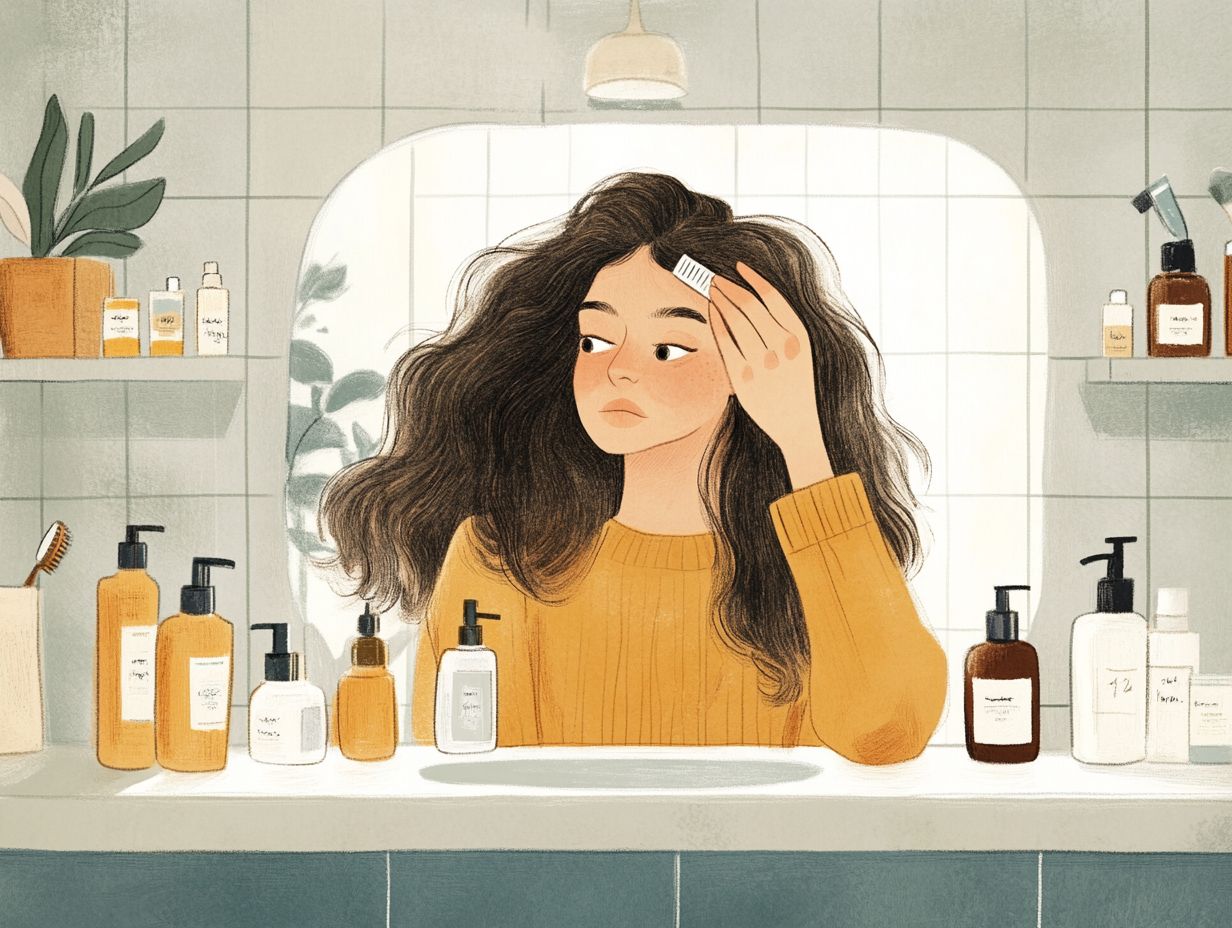
Neglecting scalp health can result in a range of issues, such as hair thinning, dandruff, and a decline in overall hair health.
I recognize that a healthy scalp serves as the foundation for vibrant hair, which is why it is essential to include scalp care in my hair care routine.
As advised by hairstylists, I understand the importance of proper cleansing, moisturizing, and treatment to maintain the scalp in optimal condition.
Importance of Scalp Care for Healthy Hair
Scalp care is essential for promoting healthy hair, as a well-maintained scalp creates the ideal environment for hair growth and vitality. Neglecting this area can result in various issues, including dryness, irritation, and diminished hair health. To foster optimal conditions for hair, I prioritize incorporating moisturizing treatments and gentle cleansing into my routine.
A nourished scalp supports stronger hair follicles, reduces breakage, and enhances overall shine. I find that regular exfoliation is effective in removing dead skin cells and product buildup, ensuring that hair follicles can breathe properly.
I also prefer utilizing products with natural ingredients like tea tree oil or aloe vera, as they can soothe and hydrate the scalp, effectively combating irritation and itchiness.
Adopting a consistent routine, such as massaging the scalp while shampooing, stimulates circulation and promotes healthier hair growth. Additionally, incorporating nourishing oils like jojoba or coconut into my weekly treatments provides deep hydration, ultimately leading to more resilient and radiant strands.
Lack of Proper Nutrition
I recognize that inadequate nutrition can greatly affect hair health, resulting in problems like dryness, breakage, and thinning.
Maintaining a balanced diet that is rich in vitamins and minerals is essential for nourishing hair from within. Therefore, it is crucial to include foods that promote hair vitality in my daily meals.
Additionally, I prioritize the guidance from hairstylists, which often emphasizes the significance of hydration and nutrient-dense diets to achieve healthy and well-moisturized hair. For more insights, check out this article on common haircare mistakes to avoid for healthier locks.
Effects of Diet on Hair Health
The impact of diet on hair health is significant, as proper nutrition provides the foundation for hair growth and moisture retention. I recognize that essential nutrients such as proteins, vitamins, and fatty acids are crucial for maintaining the structure and strength of hair. By incorporating a variety of nutrient-dense foods into my diet, I can achieve healthier, more vibrant hair over time.
A well-rounded diet rich in specific vitamins and minerals can lead to noticeable improvements. For example, biotin, a B-vitamin, is vital for keratin production, while vitamins A and C play a role in sebum production, which helps moisturize the scalp.
Including foods such as eggs, nuts, spinach, and avocados not only enhances my overall nutrition but also supports the health of hair follicles. Additionally, omega-3 fatty acids found in fish like salmon and seeds such as flaxseed contribute to nourishing the hair and promoting elasticity.
By focusing on these dietary components, I can make informed choices that effectively improve the quality of my hair.


